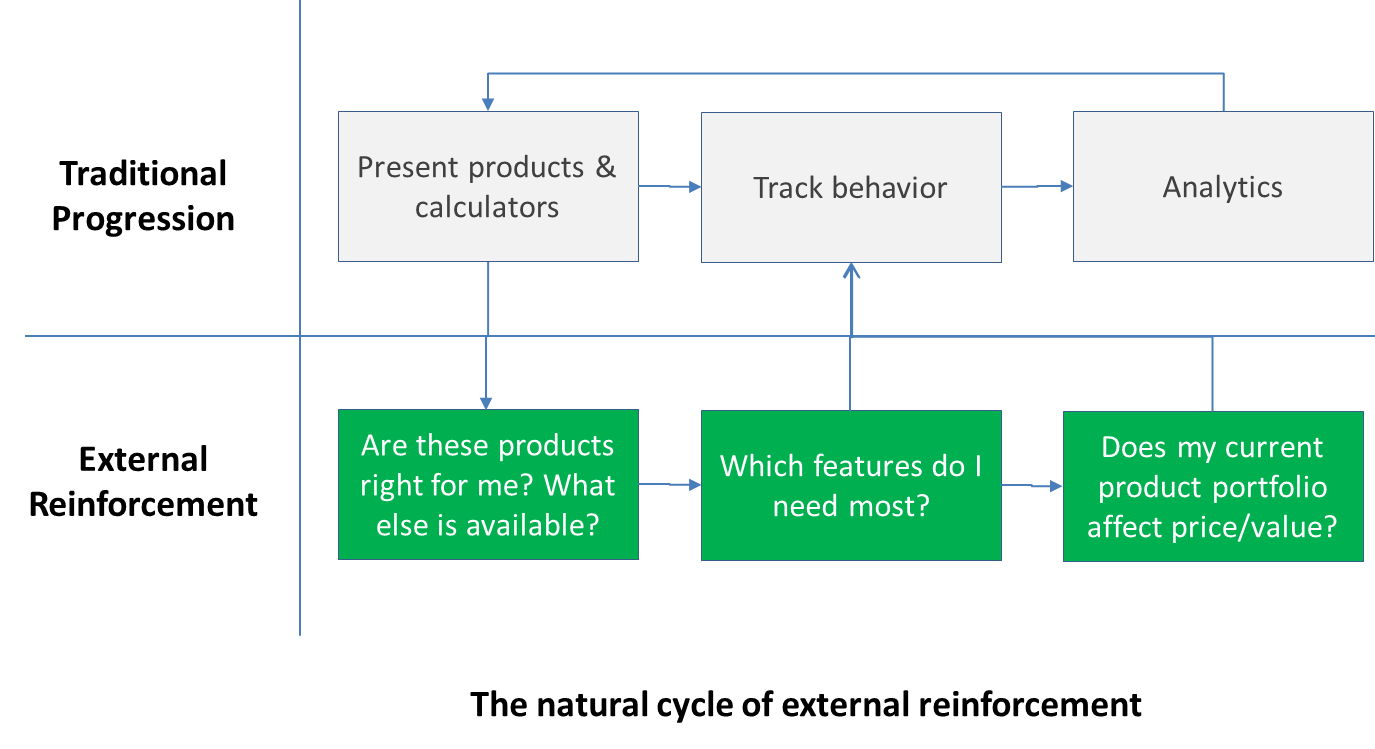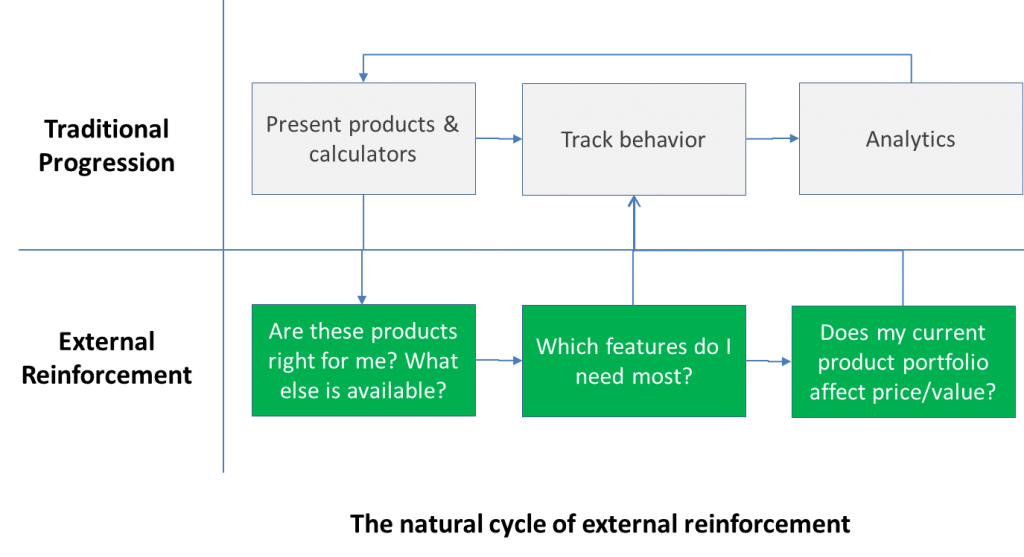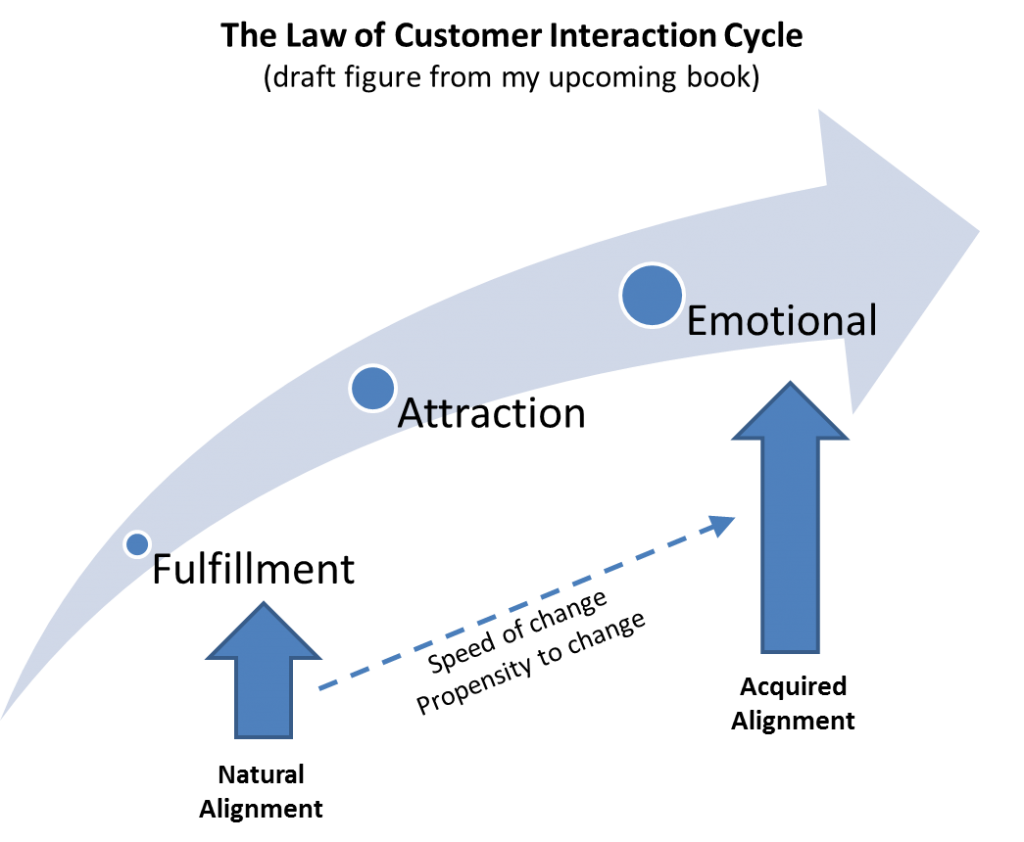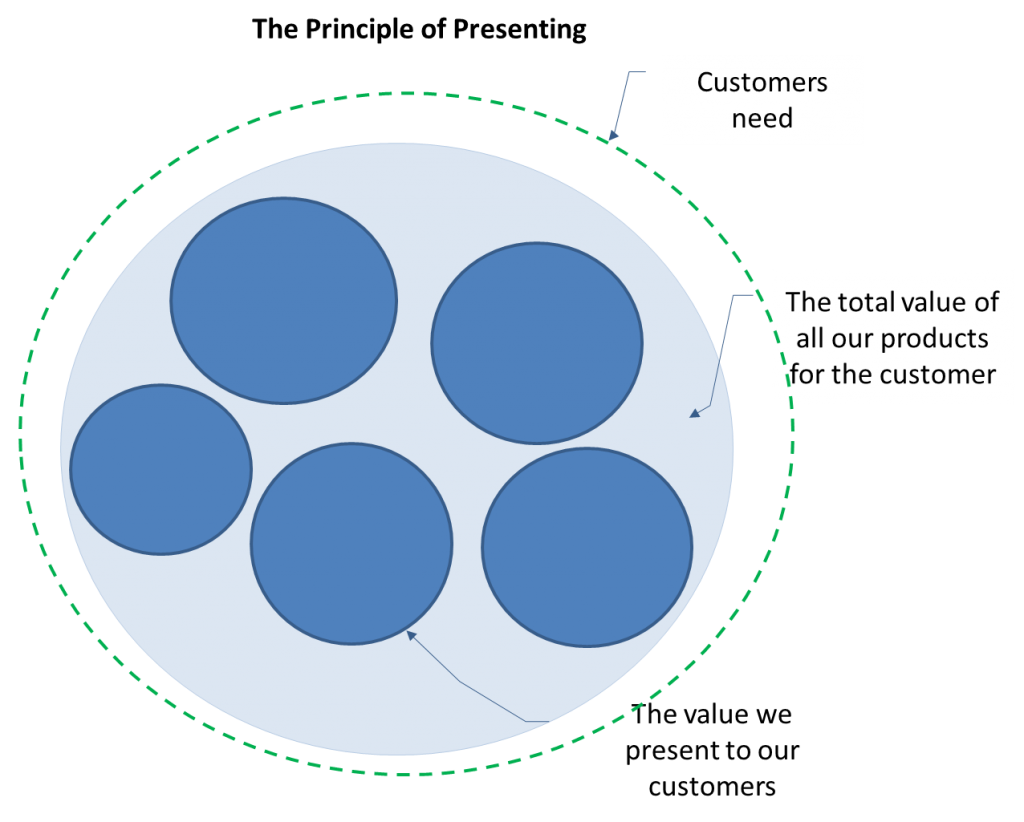It’s human nature. We look for information to help us decide and we want to help others. We post reviews, engage in conversations and post comments on online forums among other ways to express ourselves.
The Principle of External Reinforcement is the second principle in my upcoming book. It is about striving to understand the context of a customer’s need and buying stimuli, and by constantly acting to ensure your actions are in tune with how the customer’s environment is changing. Satisfying this need for external reinforcement is one of the foundations of ecosystem marketing. Understanding what a customer needs to become interested, perform research and make a decision are important for strategists and marketers who want to rise above the machine gun approach to marketing.
 How customers seek external reinforcement is not a linear path. Customers go back and forth during their decision making. Priorities change, needs change and constraints evolve to take new forms. This is true for first time as well as repeat purchases. The need for external reinforcement must be addressed at all times by engaging in a conversation not only with the customer but also with their network. By conversation I mean providing a contextual environment to answer customers’ queries, noting their actions, understanding them, interpreting them, and then reacting in an appropriate manner over multiple channels and media by potentially including their social and other networks.
How customers seek external reinforcement is not a linear path. Customers go back and forth during their decision making. Priorities change, needs change and constraints evolve to take new forms. This is true for first time as well as repeat purchases. The need for external reinforcement must be addressed at all times by engaging in a conversation not only with the customer but also with their network. By conversation I mean providing a contextual environment to answer customers’ queries, noting their actions, understanding them, interpreting them, and then reacting in an appropriate manner over multiple channels and media by potentially including their social and other networks.
To put it simply, external reinforcement is validation of fit, choice, applicability and value. Customers will buy after a due consideration of these factors, whether provided by you or by your competitors. The breadth and comprehensive of their analysis will depend on multiple factors such as availability of information, urgency of need, and affordability. Helping a customer perform this analysis makes for a perfect partnership and increases acquisition of the right customers. Denied of this reinforcement, customers may be short lived. A leading credit card company was facing extremely high customer attrition rates. After analysis, we found that most calls for cancelling product subscriptions were arising because the customers were not really being educated on why they needed the product and what other options they had. In this case, the cost to recover the acquisition cost was 8 months, so every customer lost was causing a big dent in profitability.
That brings up an additional dimension of the principle. It’s not only preferred to partner with the customer and help him make the choice, but it’s mandatory to do so to preserve your own profitability and market share. In today’s business environment, competitive advances secured through methods which are not 100% aligned with customer partnership, will result in long term failure in terms of reputation, internal organizational culture and alignment. The impact on culture is serious as it ultimately lead to an inability to innovate, thus creating a market scenario where a new entrant will steal the market share. Customer partnership forces you to innovate, and is thus a required aspect of marketing and strategy.
Examples are all around us in the form of companies that failed to ride the latest wave of digital revolution. There are many reasons, but the primary reason for their downfall is their inability to move beyond defending what they had, and trying to prove the same to the customer. Instead, if only they had looked at the customer and said “how can we make her memories better”, we would still be posing every day for the Kodak moment. IBM was in the same boat in the early nineties, but was successfully able to move beyond their legacy. Microsoft did not and is now fighting for survival in the consumer market after the mobile revolution. They’ll likely survive, but at incredible cost!



